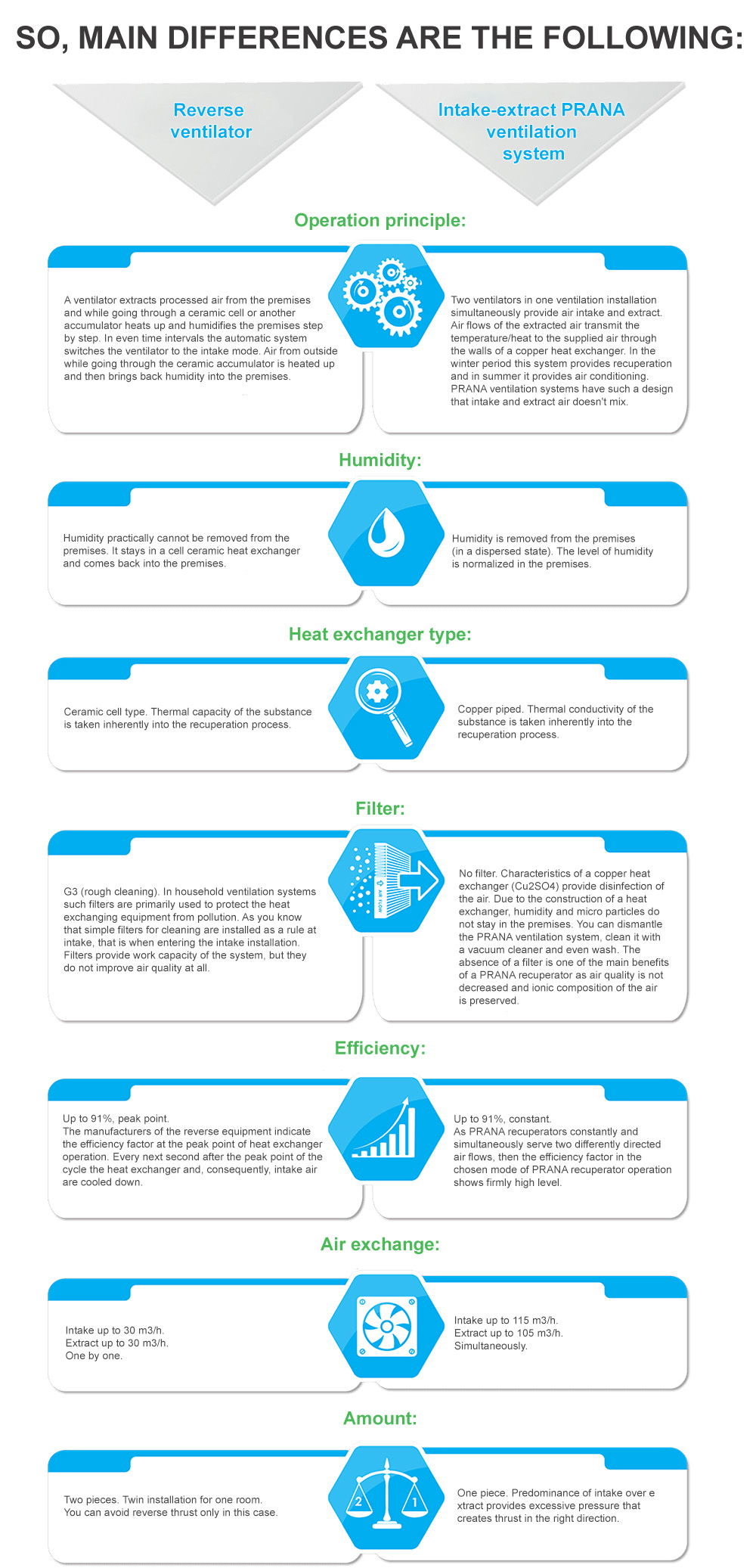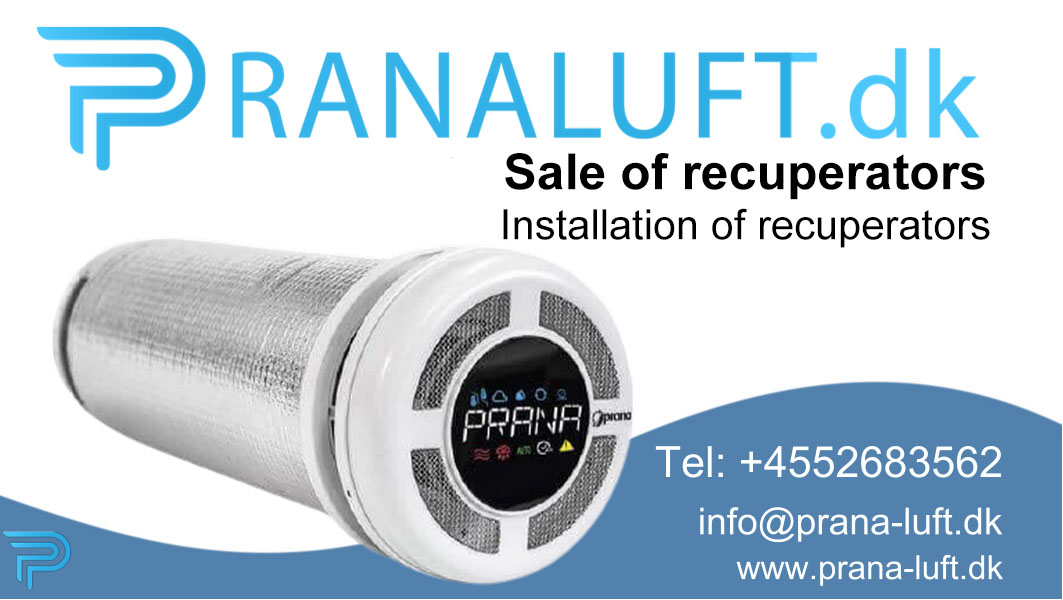Why do you need only one PRANA recuperator in the premises and there must be obligatory two reverse ventilation installations? The difference between reverse ventilators and intake-extract PRANA ventilation system.
You need ventilation if you want to feel comfortable in the premises. However, it is very important to correctly choose ventilation system, it must be cost-effective and safe. If ventilation installation is chosen incorrectly, it may cause such notion as “reverse thrust”.
In order to understand a real threat from unbalanced ventilation, let us consider possible consequences. If a ventilation system has been chosen not according to the principle of “quality-safety-efficiency” but according to the principle “cheap and cheerful”, then the reverse thrust will let itself know on the first days of working. Initially, you will feel the odours from the kitchen and toilet all over your apartment. Then furnace and cooker combustion products will become a deathly threat: carbon monoxide is an invisible killer.
Carbon monoxide poisoning is the main threat when using single/unpaired reverse ventilators!
Reverse ventilators work with intake and extract separately. That is why it is necessary to install them in a pair: two non-synchronous installations in every separate room. As the one works to extract air, the other compensates it by taking the air in. If you do not meet this requirement, there is a high likelihood to have thin air during the intake and while extracting air the flow will be compensated by means of toilet facilities, from the kitchen and even through the holes from neighbors. It will at least lead to unpleasant smell emergence, and at its maximum you will get exhaust products poisoning.
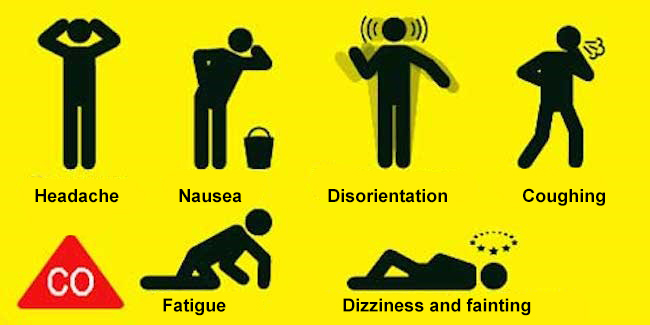
Reverse ventilator action principle.
During the reverse ventilator operation, the air, which was processed by it, is forcefully disposed from the premises. This air goes through the ceramic or another accumulator which heats up air flows. Then the reverse ventilator switches to the intake mode automatically in a definite time period. In that case the ventilator takes the air from the outside. The air is heated up going through a heat exchanger. At this moment the cycle is over and the ventilator switches again to the extract mode.

It is necessary to take into consideration that with such ventilation humidity is not taken outside but stays on the ceramic heat exchanger and then comes back into the premises.
It is important to know that reverse ventilators work for intake and extract interchangeably that creates a necessity to install them in a pair in each room: one for intake and another for extract with non-synchronous operation adjustments.
If you disregard the advice of developers and manufacturers, it may lead to the “reverse thrust” notion.
Reverse ventilators used to be sold in a pair. Nowadays, some sellers of reverse ventilators started to sell them separately and very often people install only one installation in order to save and they switch it on for intake or extract in turn.
However, a balanced ventilation system happens only when intake and extract are performed simultaneously. The best solution for decentralized intake-extract ventilation is a PRANA air recuperator.
What is the difference of a PRANA recuperator?
In decentralized ventilation systems such as PRANA recuperators air flows are mixed neither at the “entrance” nor at the “exit”. It lets you provide simultaneous intake and extract by one system. And this is the most important distinguishing feature from reverse ventilators. The PRANA recuperator is designed for fully independent operation in one room whereas you will need at least two intallations of reverse ventilators.
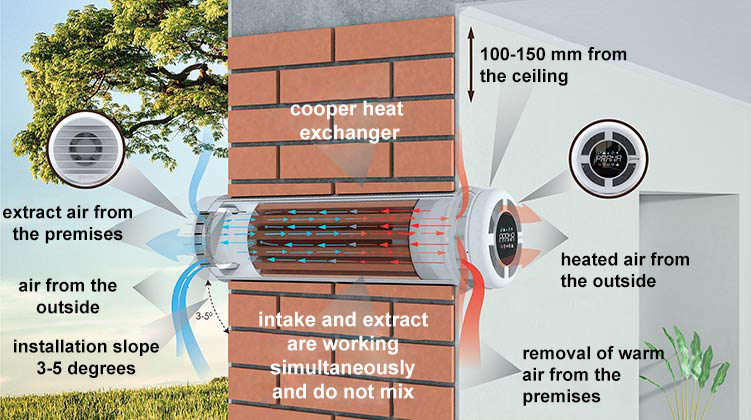
You will get a saving for your budget. You will have to pay twice as much for two installations. And if you install one reverse ventilator, you take great risks.
Concerning efficiency factors there are also dramatic differences.
As PRANA recuperators constantly and simultaneously serve two differently directed air flows, then the efficiency factor in the chosen mode of PRANA recuperator operation shows firmly high level. While the manufacturers of the reverse equipment indicate the efficiency factor at the peak point of heat exchanger operation. Every next second after the peak point the heat exchanger and, consequently, intake air are cooled down.
Apart from that, PRANA recuperators are designed in such a way, that excess of humidity is taken out from the premises in the disperse state. That is why the level of humidity in the premises is balanced.
PRANA is fighting against “reverse thrust”.
While developing the PRANA decentralized ventilation system the main task was to provide prevalence of intake over extract. As intake in PRANA recuperators is by 8% bigger, so “RRANA” can fully compensate the operation of an extractor hood and decentralized ventilation shafts in toilet facilities, thus improving their operation.
Due to the fact that air flows of intake and extract are distributed proportionally, we manage to avoid such a dangerous phenomenon as “reverse thrust”.
Carbon monoxide poisoning is the main threat of unbalanced ventilation system
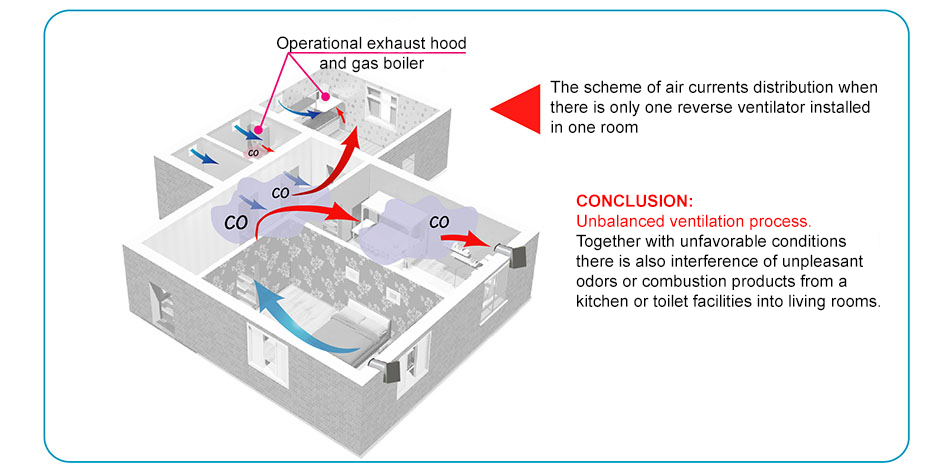
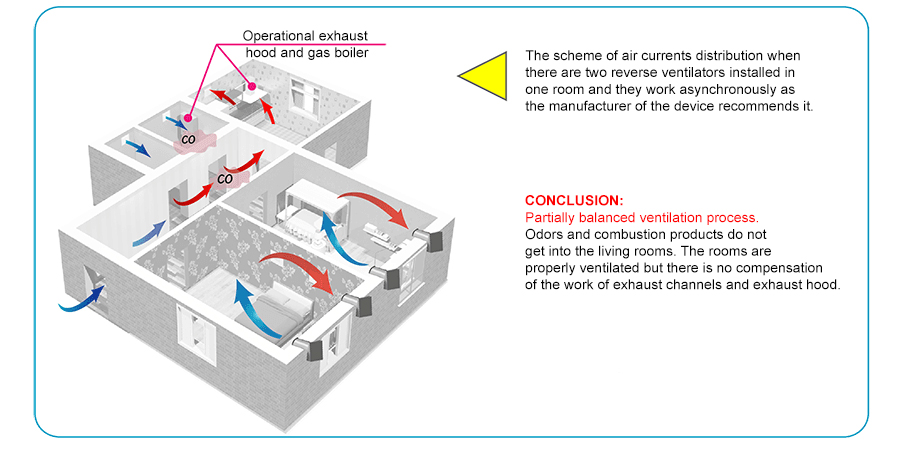
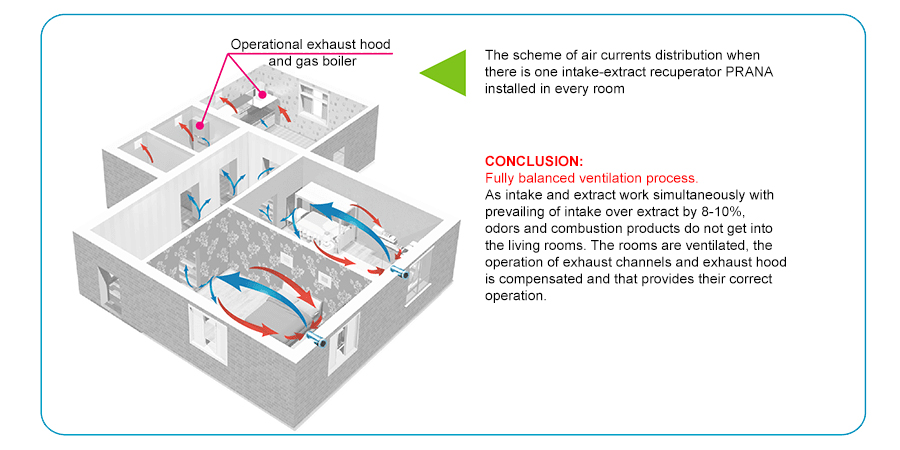
Efficiency
First of all ventilation systems must provide air exchange. Ventilation is good when there is sufficient air which is delivered into and extracted from the premises.
The efficiency of PRANA recuperators: intake is up to 115 m3 / h and extract is up to 105 m3 / h.
The efficiency of reverse ventilators in average is the following: intake is up to 30 m3/h, extract is up to 30 m3/h. It is also necessary to mention that some sellers write down common productivity of ventilators in their technical descriptions whereas the ventilator itself works by taking air in only for half of the time. It means that in this case the productivity of reverse ventilators should be divided into two.
Recuperation coefficient is one of the features of good quality of ventilation installations.
This is one of the most important criteria when choosing a recuperator. Recuperation coefficient or efficiency factor is an ability of the ventilation system to return heat (indicated in percent). PRANA recuperators have this coefficient up to 92% (depending on a model). In such a way we can provide maximum usage of heat of the extracted air and get fresh air from outside of comfortable temperature.
Other producers also indicate the same efficiency factor, namely for their reverse ventilators. What is the difference between them? The difference is that reverse ventilators have a high efficiency factor only when they work at their peak point, whereas the efficiency factor of PRANA recuperators is constantly high.
